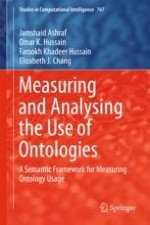
2018 | OriginalPaper | Buchkapitel
1. Motivation
verfasst von : Jamshaid Ashraf, Omar K. Hussain, Farookh Khadeer Hussain, Elizabeth J. Chang
Erschienen in: Measuring and Analysing the Use of Ontologies
Aktivieren Sie unsere intelligente Suche, um passende Fachinhalte oder Patente zu finden.
Wählen Sie Textabschnitte aus um mit Künstlicher Intelligenz passenden Patente zu finden. powered by
Markieren Sie Textabschnitte, um KI-gestützt weitere passende Inhalte zu finden. powered by